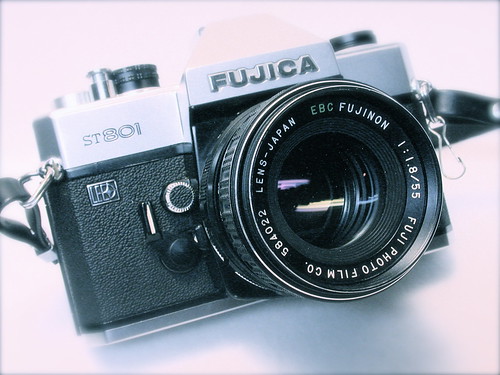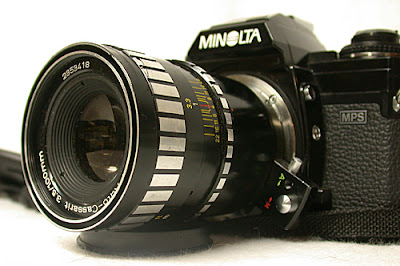Asahi Pentax S3, circa 1961-62.
Today I went out and did some shooting with a lovely little Pentax S3. A predecessor of the Spotmatic series, the S3 lacks a meter and a self-timer. It has speeds from T and B to 1/1000th sec. This particular camera is a beauty -- the chrome is good and it seems to work just fine. Considering that it is about 42 years old... that is amazing. It handles well and is a joy to use. I can adjust my exposures using the "Sunny-16" method, or use a hand-held meter. Teamed with the 1.8 55mm auto-Takumar, or a 135mm f 2.8 Mamiya Sekor M42 lens, I ought to get some nice shots. Roger Hicks has a nice article about the precursor to the S3, the HV.

The Fujica ST801 - a full-featured M42 camera, made by Fuji, 1972.
Another beauty of a camera is the Fujica ST801. With depth of field preview, LEDs in the viewfinder for adjusting exposure, B- 1/2000 sec shutter speeds, and a nice viewfinder, it might just be the ultimate M42 camera to use those old lenses on. I used this one last week and was pretty happy with my results.

Maybe you have an old screw-mount (M42 mount or Praktica mount) SLR. Dust it off and try shooting with it. If it is working properly, you find the inescapable feeling that you are using a fine piece of camera gear. Those old Spotmatics, Ricoh TLS Singlex, Chinon CM-3, and similar cameras can still enable one to take some pretty damn good photos. For more information on screw-mount cameras, try the M42 camera site.








